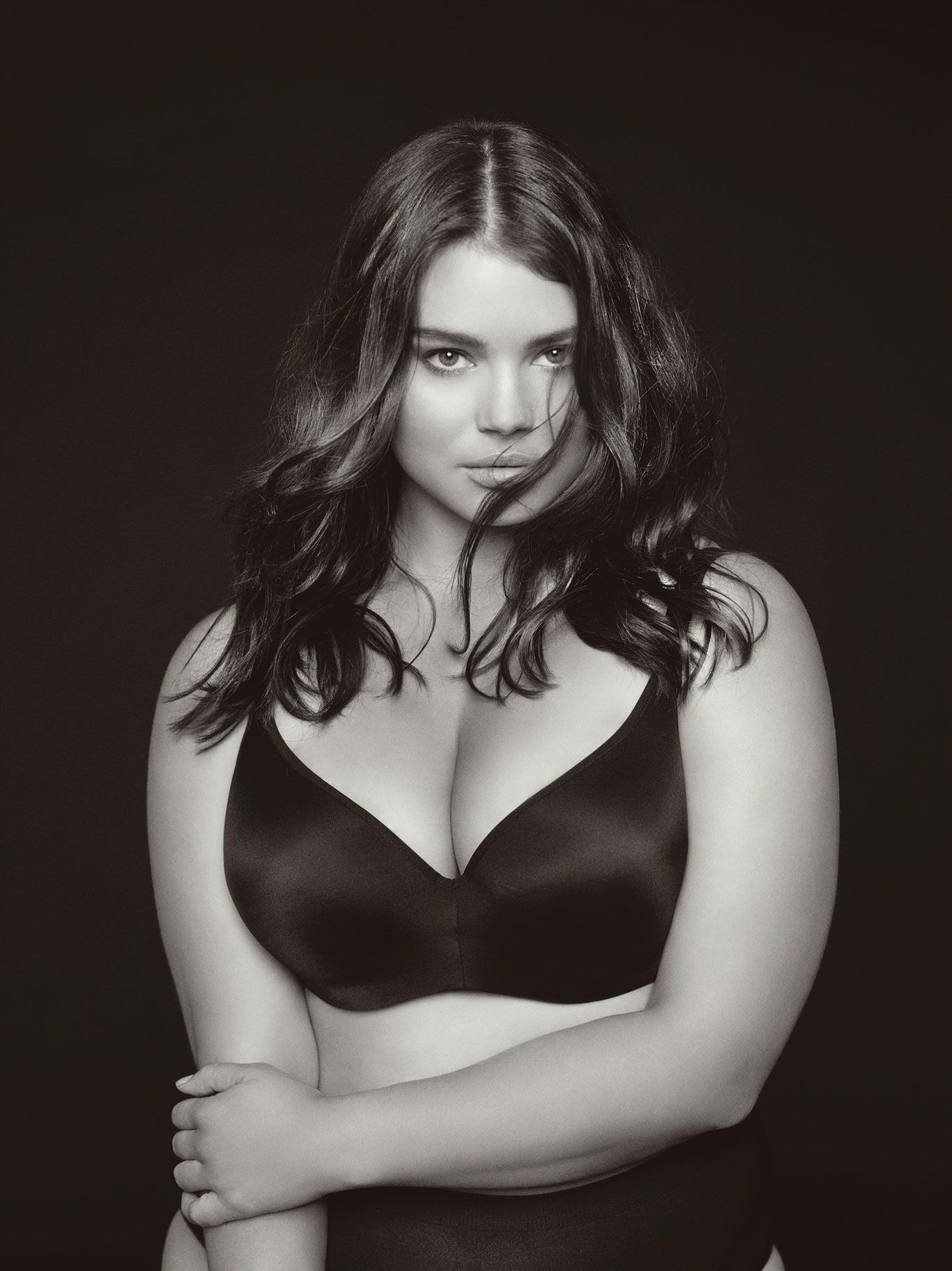

“People are very uncomfortable with the idea, but you have to see things for what they are, and shaving for women is meant to make them look prepubescent,” says Roxanne Hallal, a sexology master’s student and ambassador for the Quebec-based Maipoils movement, which provides a safe environment for anyone who wants to explore their freedom of choice regarding body hair. What started as a lucrative ad campaign bent on shaping our collective vision of beauty and femininity has grown into a universal discomfort with the female body in its natural state.
PHOTO GLAMOUR NATUREL ELLE MAGASINE SKIN
Though temporarily rejected by the hippie movement of the 1960s and ’70s, the trend for smooth skin returned in full force with the arrival of the Brazilian bikini in the 1980s and, along with it, an ever-growing variety of hair-removal methods, including laser and electrolysis. Up until that point, the company had only been marketing to men, but with sleeveless tops growing in popularity, advertisements in women’s magazines started calling the razor the must-have solution to an “embarrassing personal problem.” A shortage of nylon stockings during the Second World War and the appearance of miniskirts, bikinis and pin-up styles were all factors in shaving becoming so popular that by 1964, 98 percent of women in America shaved regularly. The first razor designed specifically for women, Gillette’s Milady Décolleté, hit shelves in 1915. By the beginning of the 20th century, middle-class and affluent North American women had already started associating smooth skin with femininity and desirability.

In the book, Darwin hypothesized that modern Homo sapiens have little body hair compared to our ancestors because they tended toward the less hairy when selecting mates, meaning the more hirsute among them were less likely to reproduce and pass down their hairy genes. Hairless skin was less popular during the Victorian era, when even a glimpse of a woman’s ankle was scandalous, but the modern trend for near-total shaving is believed to be related to Charles Darwin’s famous theory of “natural selection,” which he explained in his 1871 book, The Descent of Man, and Selection in Relation to Sex. Over the centuries, everything from pumice stones to tweezers to thread to sugar were used for hair removal. The smooth look is nothing new it goes back to around 3000 BC, when the world’s oldest known razors were made from copper in Egypt and India. The past year and a half has seen many of us take a step back to examine societal norms surrounding aesthetics-goodbye, bras, makeup and constrictive clothing- and ask an honest question: Who am I really doing this for, anyway? Now more people are questioning their body-hair- removal routines too.


 0 kommentar(er)
0 kommentar(er)
